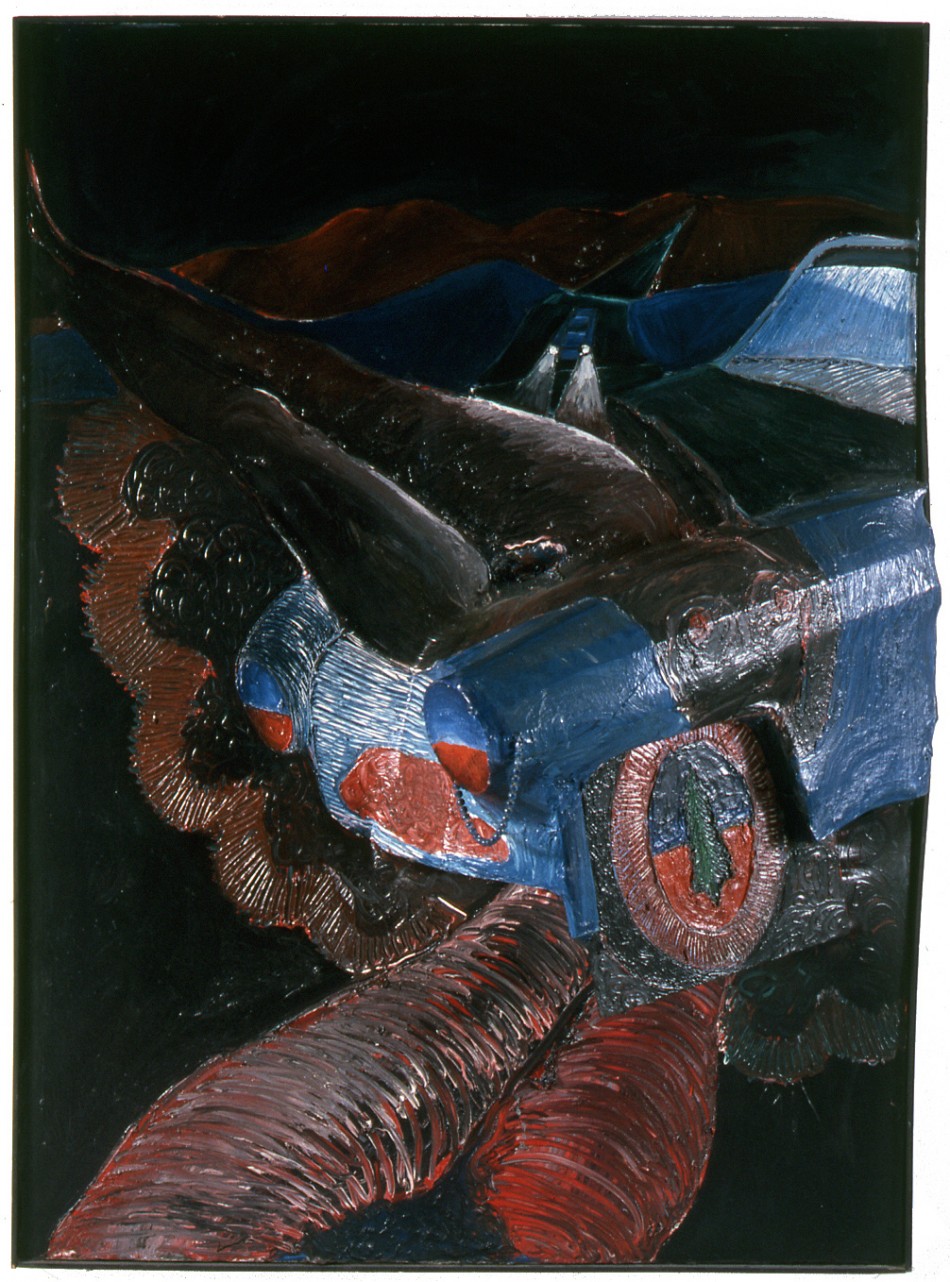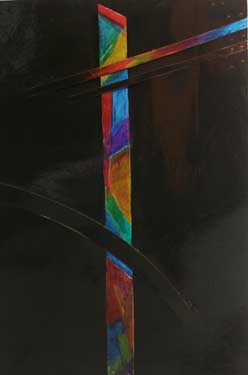
Tom Holland: The World’s Not Flat
Epoxy on aluminum. Fiberglas machined so that in painted strips it makes up a relief surface, Pop art and pop-up. Painted sculpture, three-D wall constructions, both describe with a happy underline, portions of the work of Bay Area painter Tom Holland, enjoying a 1960-2011 career retrospective now at David Richard Contemporary, until April 21. Holland, well into his 70s, retains a sense of the freshness of 1960s experiment referencing everything from car culture to light switches to critters that scuttle on the California ground. The fact that the decade for him also marked his leap into using fiberglas to leave a frame behind, and make relief the motif of his work, also allows visitors to get a feel for both the consistency of a half-century practice, and the painterly freedoms he’s enjoying lately.

Tom Holland, Untitled Red Hanging, 1966
Roberta Smith wrote back in 2000 about Holland’s relationships to color and form evoking “Hockney rehearsals of Matisse interiors.” Hilton Kramer called Holland’s work “stunning.” It has, clearly, a futurist jones: the soul of the dremel tool, the organicity of the wave, the strip of “Beetle” back peeled off as if referencing a maxi dress in colored rickrack, as much as the bug in unabashed carmine.
Encountering Holland’s work, then, of the 80s, there are some soft blues with hatch marks that offer a Jasper Johns-suggestive place for the eye; motion in slide. In newer work, the surging return of primaries, green, blue, red, an unafraid color way, with brown, that also accompanied the early ’60s lizard, makes you feel like he got his color nerve back. Fiberglas took him into the realm of natural machine-painter man, leapfrogging boundary. That free feeling is one that makes you want to laugh, as well as imagine that what’s here could have happened with a scissor and airplane glue as much as a turbine bit. Form and color dance, as in Pope Valley Moonlight #64, a painted sculpture of epoxy-painted aluminum cut-outs in (mostly) kelly green with visible gaps through the light-shot tower.

Richard Pettibone: Frank Stella, Telluride, 1961; Niki Lauda Driving a Ferrari 312 B At the Monaco Grand Prix, 1975 and Black Square, 1975-78
Regarding some of the Hollands, led me back to this image by Richard Pettibone: Frank Stella, Telluride, 1961; Niki Lauda Driving a Ferrari 312 B At the Monaco Grand Prix, 1975 and Black Square, 1975-78, redolent in compound phrases of how much fluency Holland uses, in a unified painted phrasing, to handle futurism and habits of print taken 3-D; a history of shaped painting; not to mention Duchampian selection puns spun into objects; or “nature” as animation meaning both cartoon and movement.

Tom Holland, Beetle, 1978
There’s a refreshing lightness to this work heavy on sensibility. I channeled good old John McCracken finally; though McCracken was much more monolithic, and not nearly so expressive, Holland’s work finally suggests the standing form of a man encountering the world, bending down to examine the small, picking up in the palm of the hand a horned toad and noting its jutting crown. It is decidedly California and not afraid to shout it out; neither the world is flat, nor a wave, nor painting.
